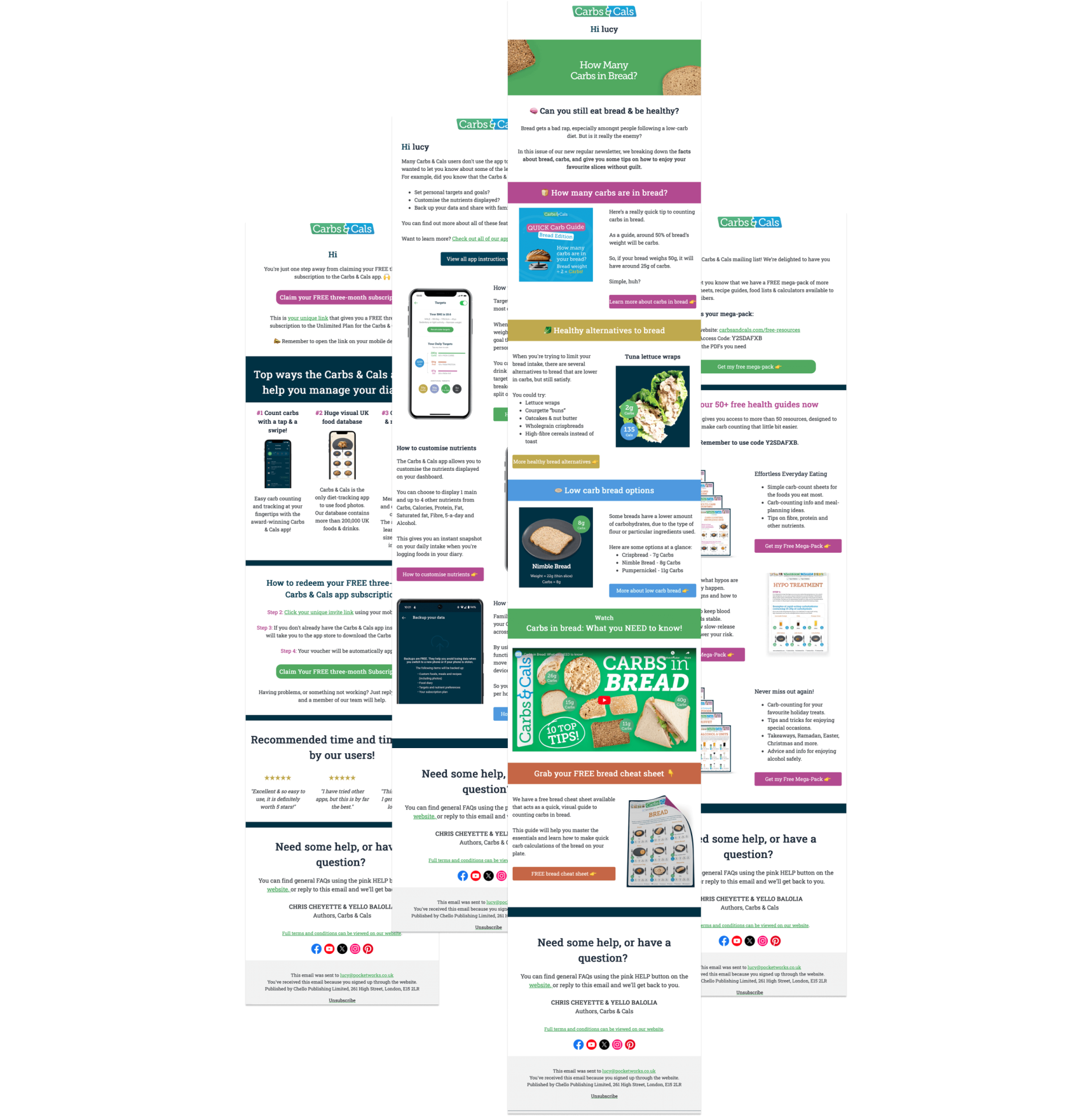When it comes to managing blood glucose, carbohydrates often take centre stage. Whether you are newly diagnosed with diabetes or have been managing it for years, you have probably heard a lot of advice about carbs: “Cut them out,” “Only eat complex carbs,” “Avoid sugar,” or “Count your net carbs.” It can feel overwhelming and confusing.
At Carbs & Cals, we believe that understanding the different types of carbs and how they affect your body is key to feeling more confident about your food choices. As a diabetes specialist dietitian, I want to help break down the science in a simple and practical way.
Let’s take the mystery out of carbs.
What are carbohydrates?
Carbohydrates are one of the three main macronutrients, along with protein and fat. They are the body’s preferred source of energy and are found in a wide variety of foods. These include fruit, vegetables, bread, rice, pasta, cereals, milk, yoghurt and sugary foods.
When you eat carbohydrates, your body breaks them down into glucose. This glucose enters your bloodstream and is used for energy. For people with diabetes, understanding how different types of carbs affect blood glucose levels is especially important.
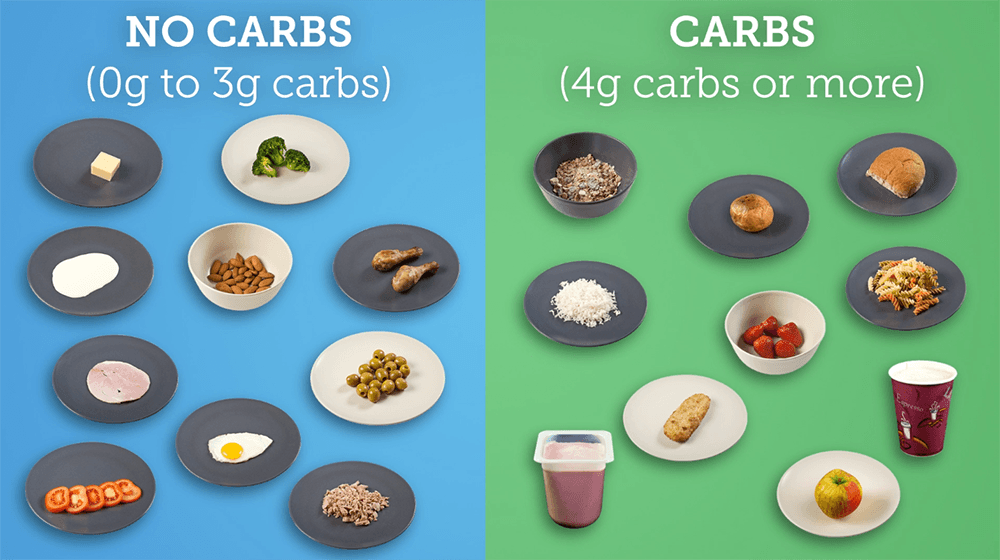
The three main types of carbs
1: Sugars: Simple carbohydrates
These are the most basic form of carbohydrate and are digested quickly by the body. This often leads to a rapid rise in blood glucose levels.
Sugars can be:
- Natural, such as lactose in milk and fructose in fruit
- Added or free sugars found in sweets, fizzy drinks, cakes and biscuits
2: Starches: Complex carbohydrates
These carbohydrates are made up of many sugar units joined together and take longer to break down. This generally leads to a more gradual increase in blood glucose.
Starchy foods include:
- Bread
- Pasta
- Rice
- Potatoes
- Cereals
3: Fibre: Non-digestible carbohydrates
Fibre is a type of carb that the body cannot digest. It does not raise blood glucose levels and can actually help slow down the absorption of sugars. This supports more stable blood glucose levels.
Foods high in fibre include:
- Wholegrains
- Fruit and vegetables (especially with skins)
- Beans, lentils and peas
- Nuts and seeds

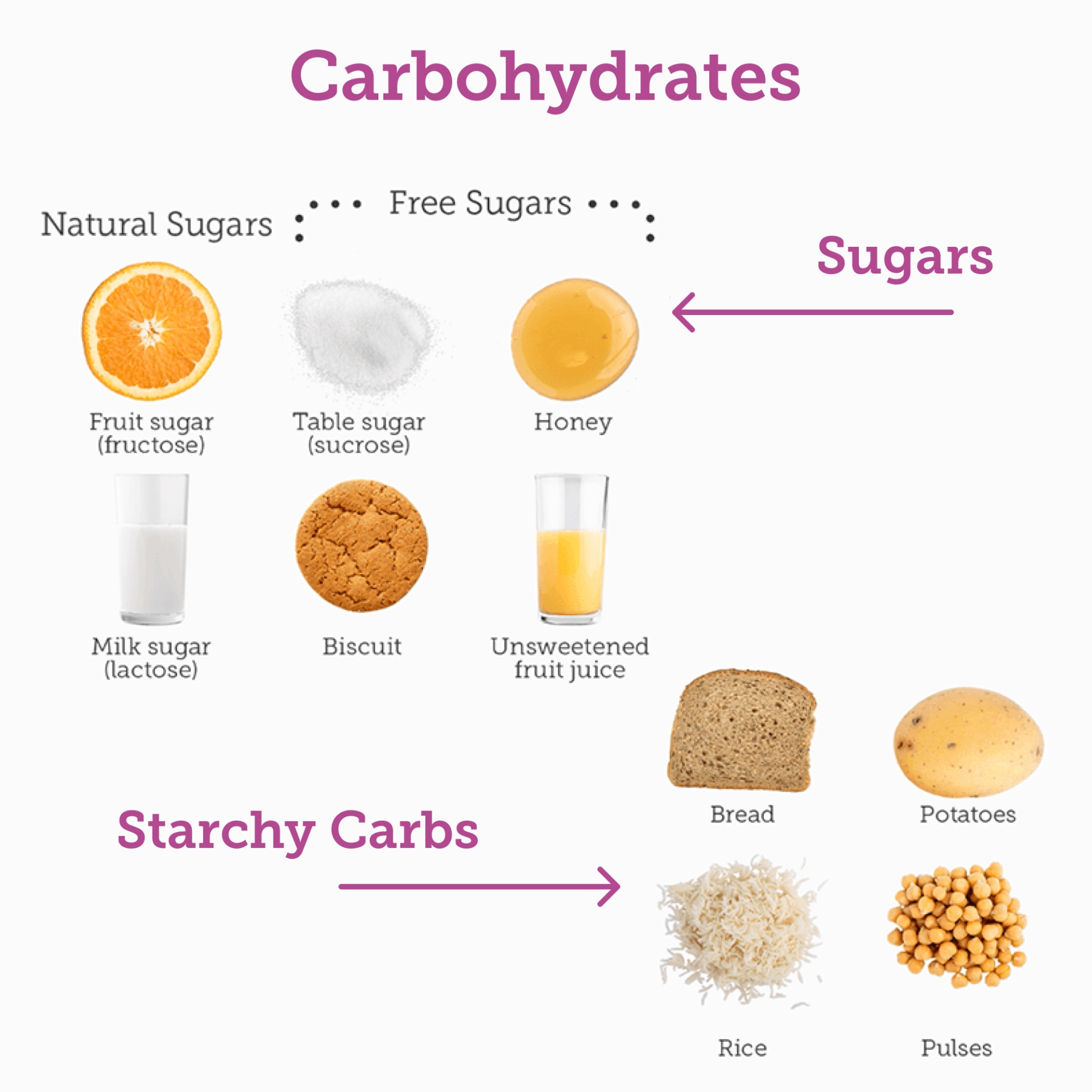
Fast-acting carbs vs. slow-acting carbs
If you have diabetes, especially if you use insulin or other glucose-lowering medication, it helps to understand how quickly different types of carbs act.
- Fast-acting carbs, such as sugary drinks and glucose tablets or gels, are digested quickly and are useful for treating hypos (low blood sugar).
- Slow-acting carbs, such as wholemeal pasta, jumbo porridge oats and berries, release glucose more gradually and can help avoid sudden spikes or drops in blood glucose.
Carbs & Cals Tip: Our visual portion guides in the Carbs & Cals app and Carb & Calorie Counter book show the carb content of different foods and portion sizes, making it easier to choose the right foods at the right time.
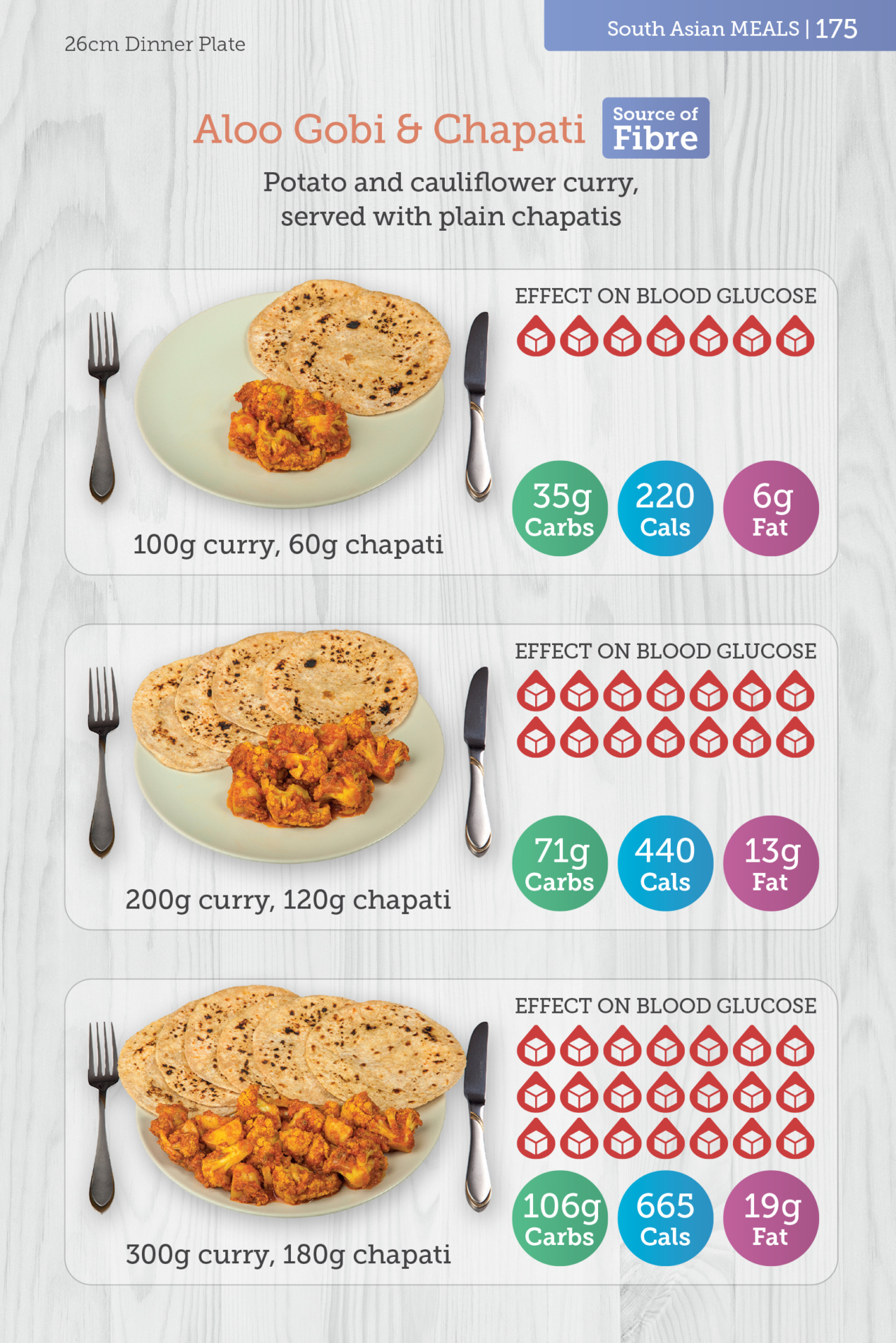
Whole carbohydrates vs. refined carbohydrates
Even if two foods contain the same amount of carbohydrate, they can affect your body in very different ways.
- Whole carbohydrates are minimally processed and contain fibre, vitamins and minerals. Examples include wholegrain bread, brown rice, lentils, fruits and vegetables.
- Refined carbohydrates have been processed to remove fibre and nutrients. These include white bread, pastries, sugary cereals and many packaged snack foods.
Whole carbohydrates are usually the better option. They support more stable blood glucose, heart health, digestive health and overall wellbeing.
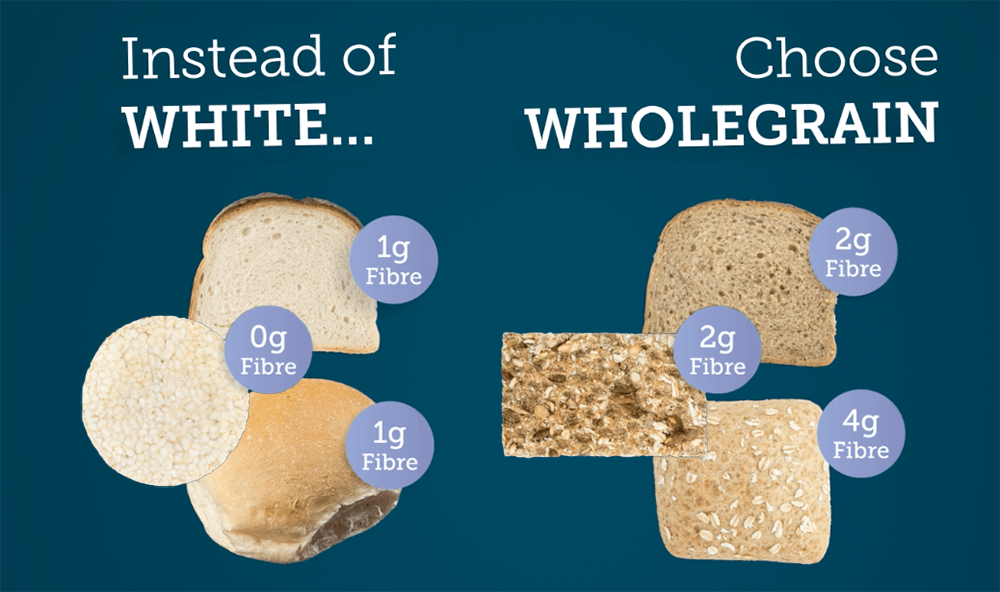
What are “Net Carbs”?
You may have come across the term “net carbs,” especially on American websites or food labels. Net carbs are calculated by subtracting fibre (and sometimes sugar alcohols) from the total carbohydrate content. The idea is that fibre does not impact blood glucose levels.
However, net carbs are not used or recommended in the UK. UK food labels already show total carbohydrates and usually list fibre separately. So, if you are carb counting, you just need to look at total carbs when looking at labels.
At Carbs & Cals, we always show total carbs per portion in line with UK labelling and NHS guidance.
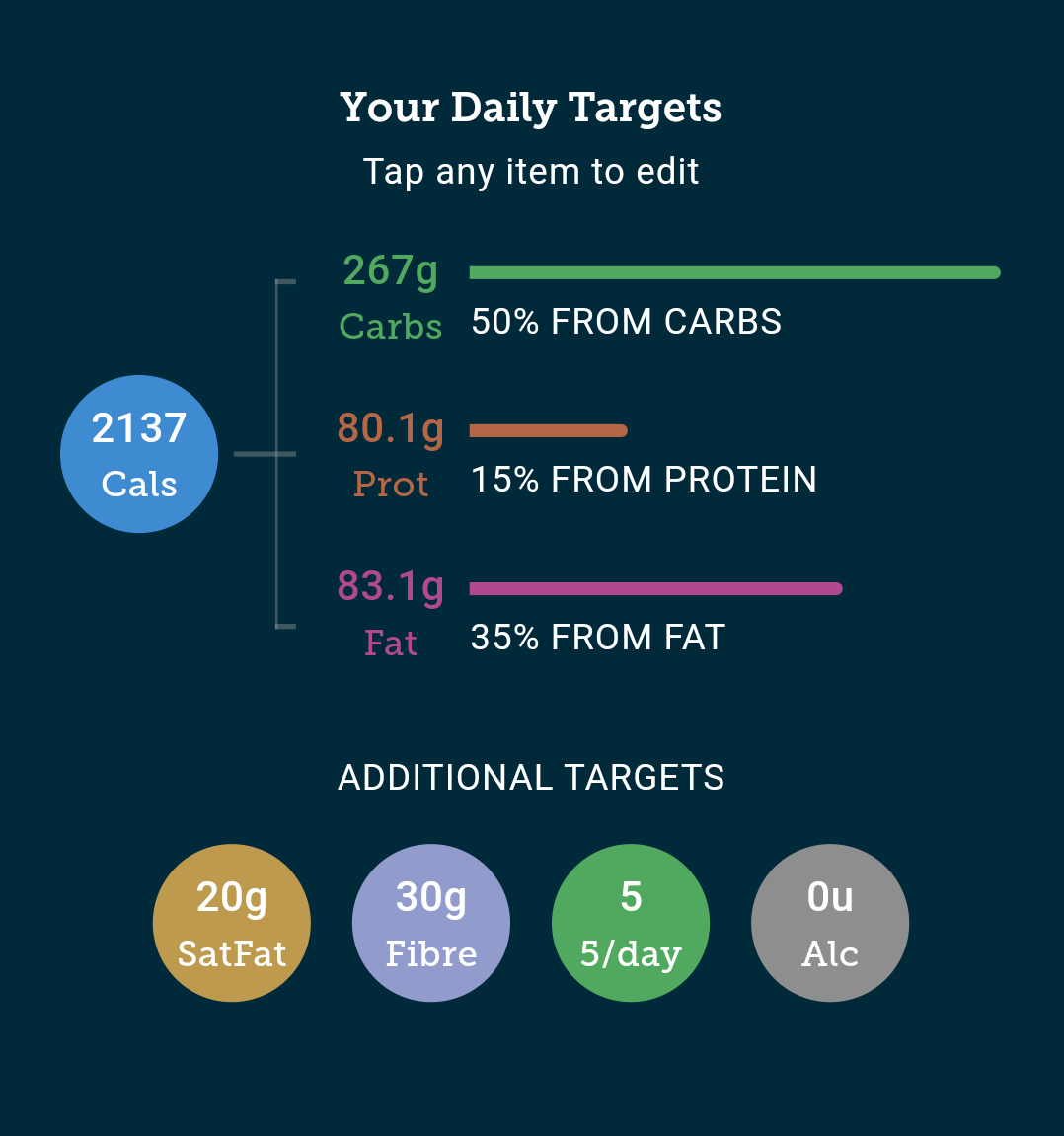
The Carbs & Cals app has daily targets and totals to keep you on track.
Do I need to count carbs?
Carbohydrate counting is commonly used by people with Type 1 diabetes, especially when using a basal-bolus insulin regime or on an insulin pump. It helps match insulin doses to the amount of carbohydrate eaten.
If you have Type 2 diabetes, being aware of your carbohydrate intake is still very helpful. Understanding which foods raise your blood glucose, and by how much, can help you manage your levels more effectively.
The Carbs & Cals books and mobile app are designed to make this easier. With clear photos and accurate nutrition information for a wide range of foods and meals, you can quickly estimate your carbohydrate intake whether you are at home, at work or eating out.
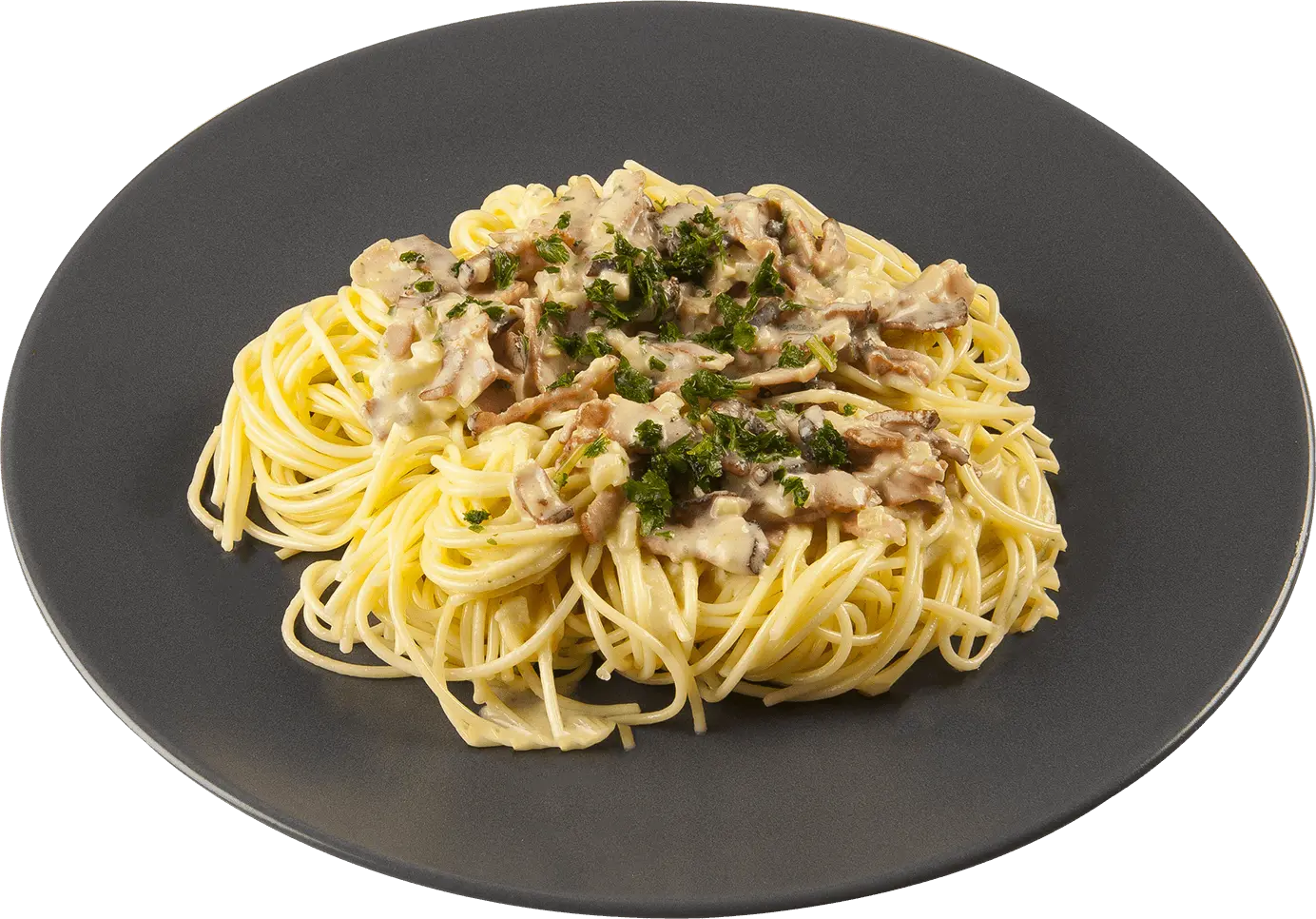
41g
Carbs
Spaghetti Carbonara
Weight = 260g
Carbs = 41g / Cals = 446
Fibre = 3g / Protein = 20g
Fat = 22g / SatFat = 12g
Understanding types of carbs: Make them work for you
Carbohydrates are not something to fear. The key is to focus on the quality, quantity and timing of the carbs you eat.
Here are a few practical tips:
✅ Balance your meals by combining high-fibre carbohydrates with sources of protein and healthy fats. For example, pair wholegrain toast with eggs and avocado, or have lentil soup with a side of wholemeal bread. Aim to include plenty of vegetables and some fruits every day.
✅ Watch your portion sizes. Use the Carbs & Cals app and Carb & Calorie Counter book to see what different portion sizes look like.
✅ Choose high-fibre carbs such as wholegrains, fruit, vegetables, pulses and oats.
✅ Limit free sugars found in fizzy drinks, sweets and many processed foods. Cutting down on these is one of the easiest ways to reduce your overall carb intake and improve blood glucose control.
Carbohydrates are an essential part of a healthy, balanced diet. Understanding the different types of carbs and how they affect the body is key to managing diabetes.
You do not need to avoid carbs. Instead, learn how to choose the right kinds, in the right amounts, at the right times.
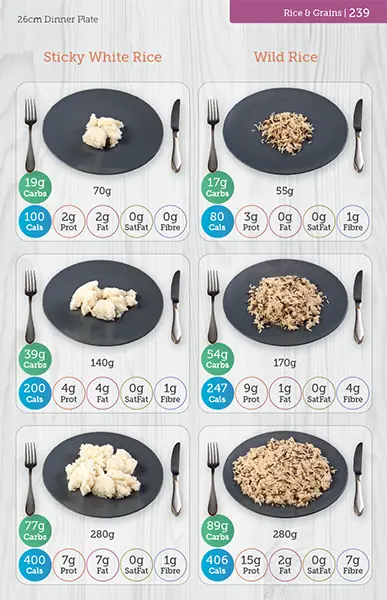
Carbs & Cals uses visual portion sizes to help you learn to count carbs and nutrients in food.
Want to Learn More?
Grab a Copy of Carb & Calorie Counter
The multi-award-winning Carb & Calorie Counter book is your definitive, expert-approved guide to carb and calorie counting.
- Over 1700+ high-quality food photos
- Up to six portion sizes per food
- At-a-glance carbs and key nutrients
- The Original #1 Bestseller
With the “Carb-Counting Bible”, a single flick of the page is all you need to plan nutritious, carb-counted meals.
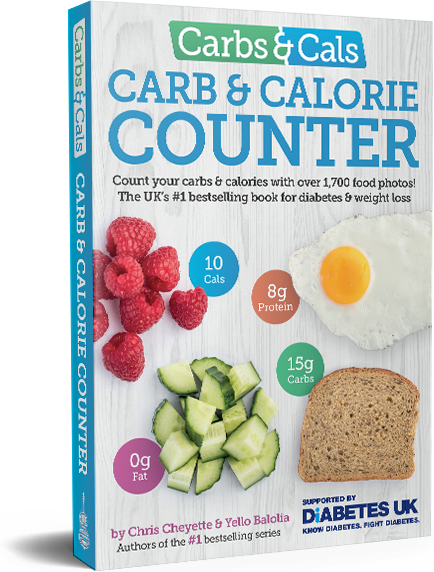
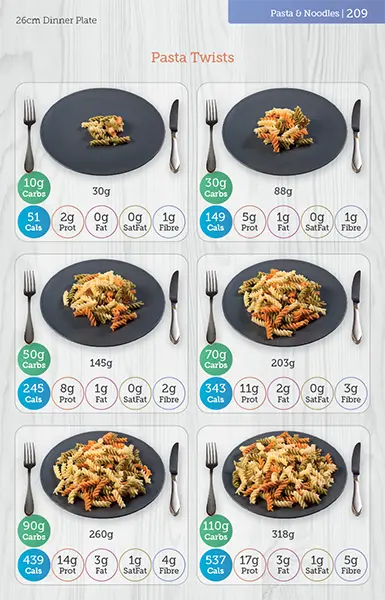
Contains hundreds of food photos that makes carb counting easy!
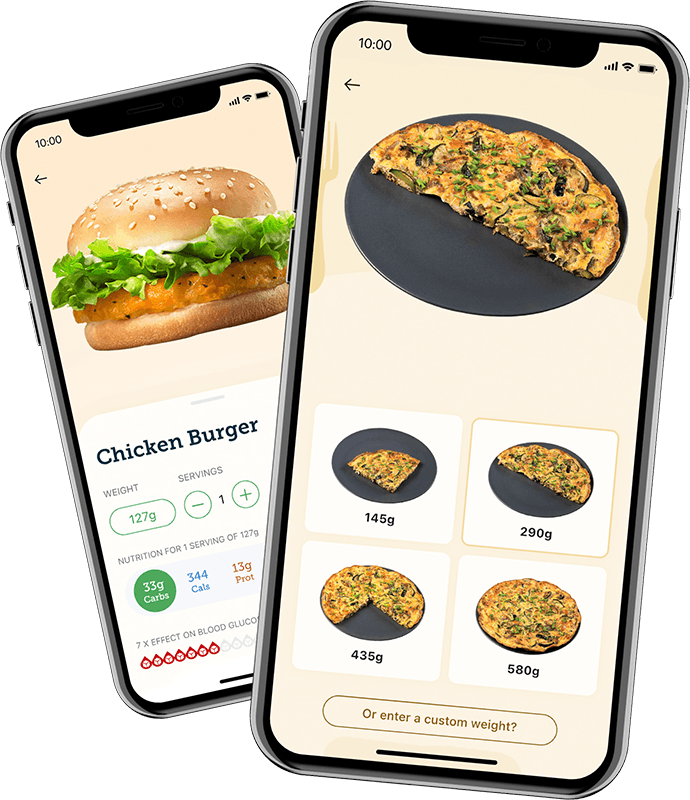
Sign up to the Carbs & Cals mailing list
Want to learn more about carb counting and the role of food in managing your health? Sign up to our mailing list!
